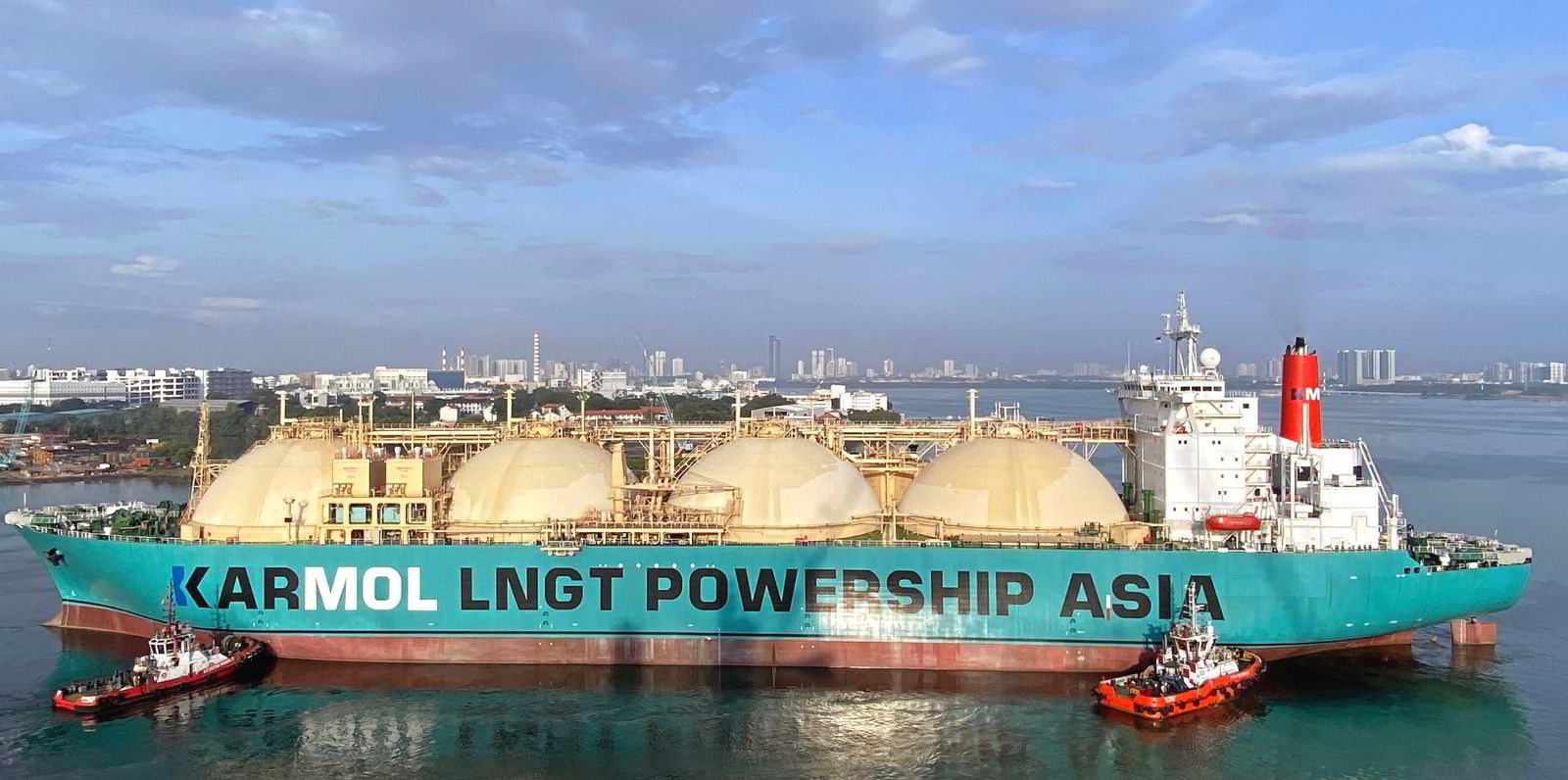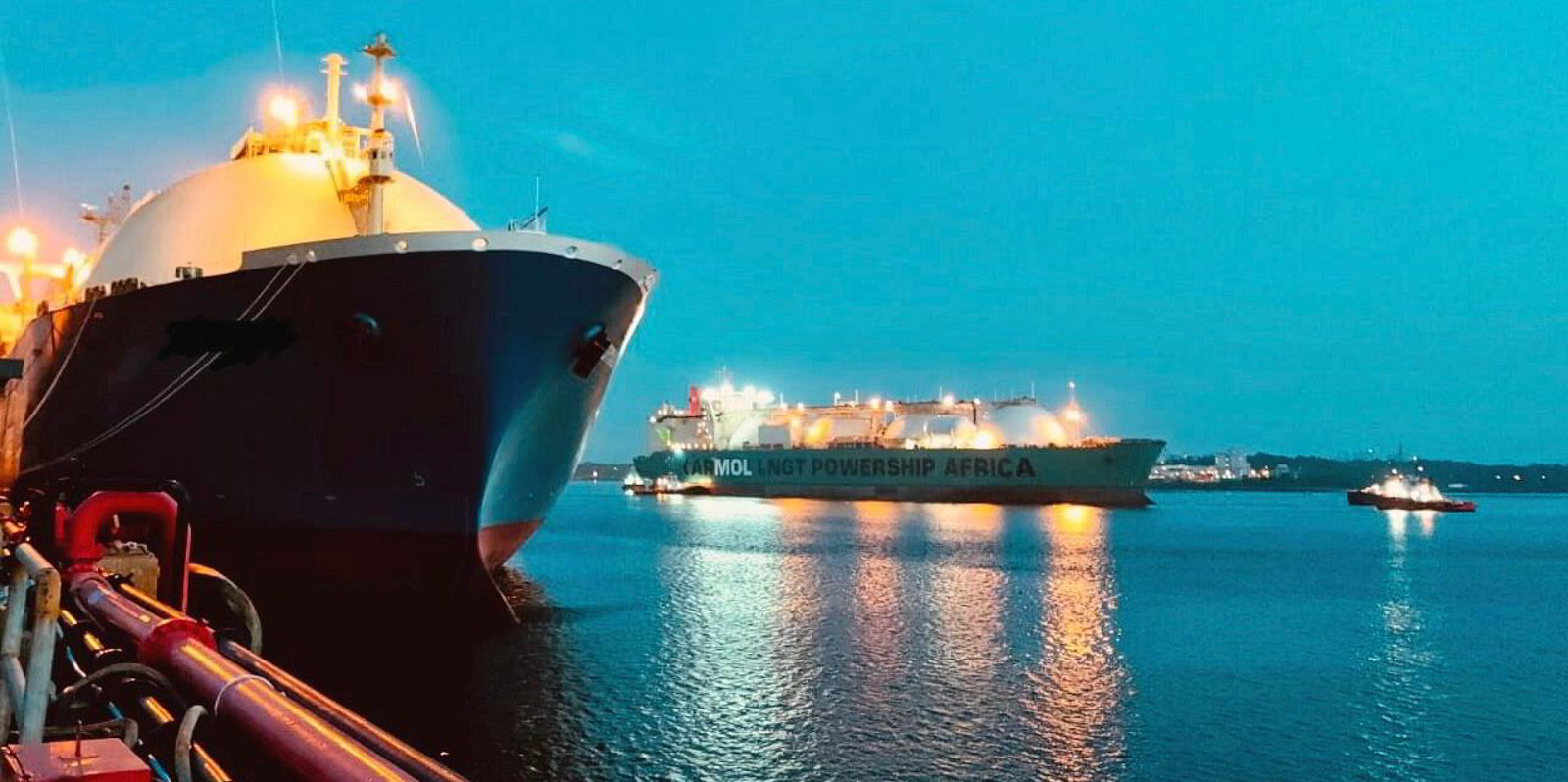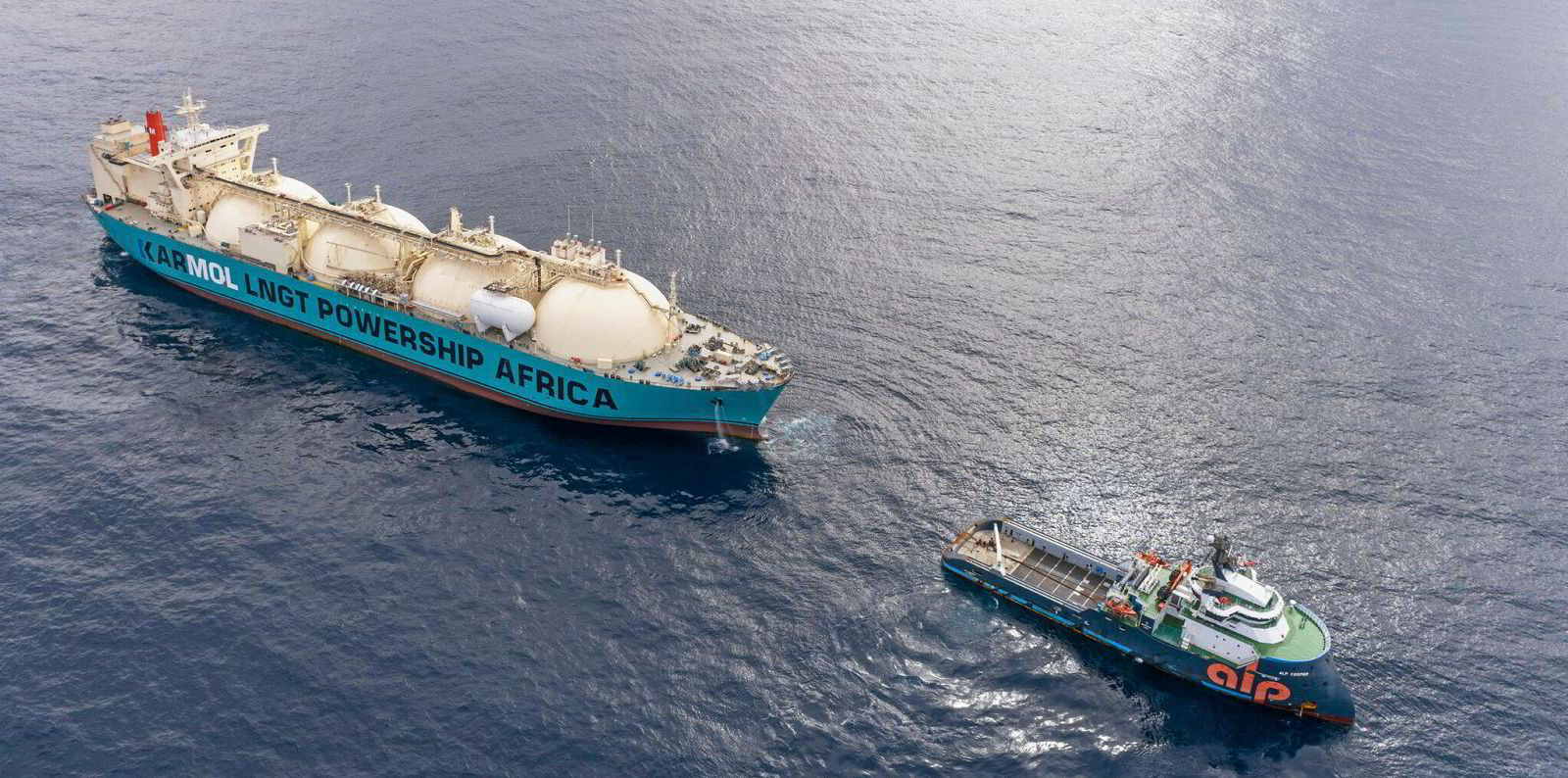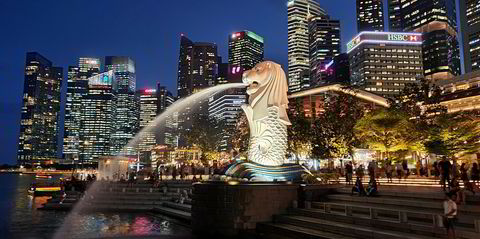A first floating storage and regasification unit for Karpowership-Mitsui OSK Lines joint venture KARMOL has arrived in Brazil and is preparing to start supplying regasified LNG to four powerships from July.
The 127,452-cbm KARMOL LNGT Powership Asia (built 1991), which is a conversion of the LNG carrier Northwest Shearwater, arrived off Rio de Janeiro on 11 May.
The unit is currently in port while a crew change is underway and supplies are taken on board but will shortly move offshore until all final authorisations and paperwork have been completed and it can be moored at its permanent location in Sepetiba Bay.
TradeWinds spoke to Karpowership business development coordinator Serdar Kumbasar who is currently working on the business — a breakthrough first South American project for the powership provider.
The regas vessel, which stopped off in South Africa for inspections and a little show-casing of its concept, loaded commissioning LNG volumes in Singapore.
It is expected to receive a top-up shipment shortly so that it will have a full cargo once it goes on station.
Once in place, the KARMOL LNGT Powership Asia will be used to supply four powerships controlled by Karpowerships. The regas unit will be moored around 300 metres from them.
Between them, the powerships will supply a total of 560 MW of combined capacity to Brazil.
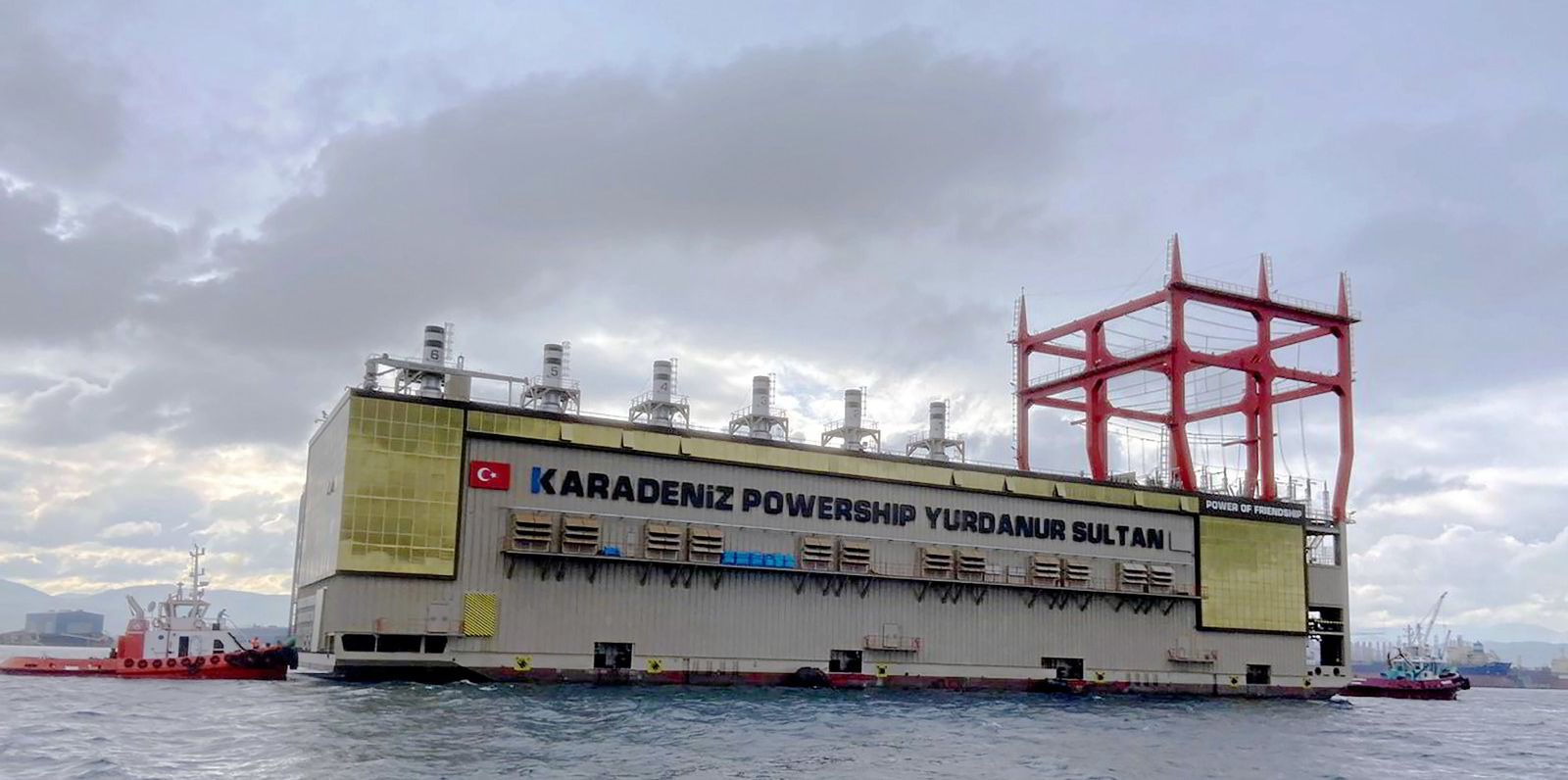
One of the powerships is already on location, with a second due to arrive on 24 May. The final two are scheduled to be delivered to the site in the first half of June.
The quartet are being used to serve four separate contracts — one for 255 MW, two for 115 MW and a fourth for 75 MW, which Karpowership won on 25 October 2021 under Brazil’s emergency 17-contract energy auction to provide reserve power from May 2022 to December 2025.
The projects are for 44-month contracts to the same Brazilian customer.
While the power contracts include a certain baseload supply, the volume of electricity they will ultimately dispatch will depend on the state of Brazil’s hydro-electric power generation capacity, which is ultimately governed by the amount of rainfall the country receives.
But it is anticipated that the FSRU will receive a cargo once every 25 days to three months, depending on the electricity supply demanded from the powerships.
Karpowership is believed to be in discussions with LNG suppliers on cargoes and whether these will be supplied on a spot or time-charter basis.
Brazil is no stranger to FSRUs, including those moored offshore rather than in port. The country was one of the first to deploy them, taking in two then-Golar LNG-controlled regas units in 2007, with the first of these being put into operation a year later.
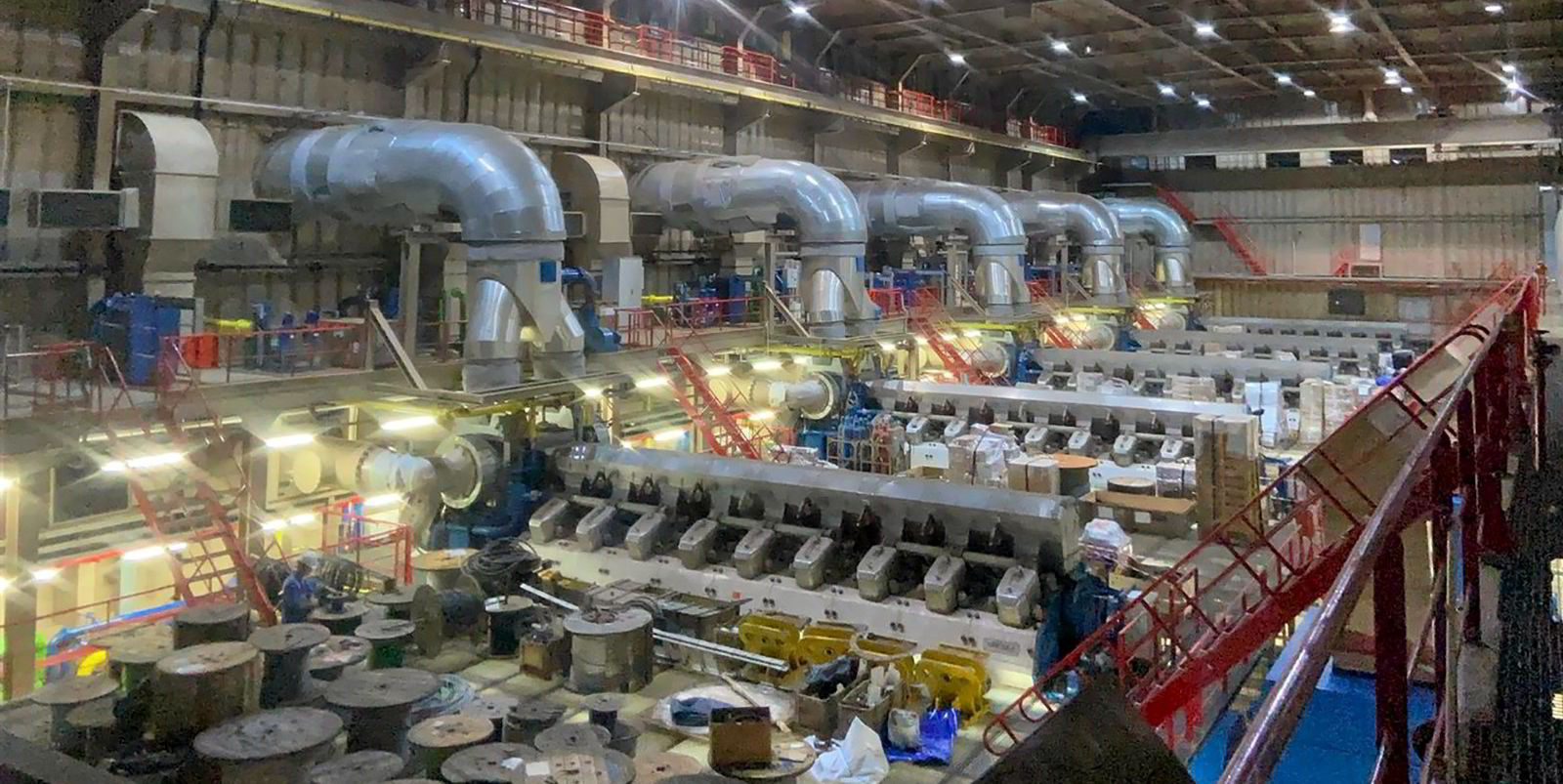
Karpowership opened an office in Rio de Janeiro in January to support the project and has been staffing this up.
The company has spoken about its intention to expand its presence in the region both in LNG-to-power and renewables.
Karpowership kicked off plans to shift its powerships over to use cleaner-burning natural gas several years ago, with parent Karadeniz group teaming up with MOL to form KARMOL in March 2019.
Technically this is KARMOL’s second FSRU to be deployed and it is being put in place as demand for regas units’ in Europe soars as the region tries to find alternatives to Russian pipeline gas supplies.
The joint venture’s first unit, the 125,000-cbm KARMOL LNGT Powership Africa (ex-Dwiputra, built 1994), arrived off Dakar in Senagal, West Africa, almost a year ago.
But the unit would appear to have fallen foul of record high gas prices experienced later in 2021 and early this year, as it has yet to take in a cargo, despite market talk that several have been incoming over the last few months.
In contrast, the Brazilian LNG-to-power project, however, is expected to start up as planned with LNG supply for its FSRU.
Aside from these two regas units, KARMOL is also converting a third LNG carrier, the 127,000-cbm LNG Vesta (built 1994), into an FSRU in Singapore.
In March, the company said this third FSRU had been earmarked for a project in Mozambique.
Karpowership, which teamed up with Qatari shipowner Nakilat on the use of FSRUs for LNG-to-power projects in October 2020, has also acquired a TotalEnergies LNG carrier, the 154,472-cbm LNG Unity (ex-Provalys, built 2006).
It is not yet clear if this vessel will become an FSRU conversion candidate or used as a trading vessel to supply its units.
